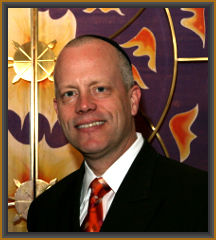
 |
October 13, 2023 (21 Tishrei 5784) Parasha Bereishit - Standing with Israel
Dear Friends, It is with the heaviest of hearts that I sit here composing my article for this Shabbat. Routinely, after completing my weekday commute, I am eager to open the laptop, slide up my chair, and begin sharing personal stories, Jewish perspectives, and, hopefully, meaningful Torah interpretations. Tonight, I type, cautiously and gingerly, gently pressing on an electronic keyboard, knowing that whatever I compose will be lacking, insufficient, and unable to repair our broken world. Our beloved State of Israel and our dear Jewish brothers and sisters have been subjected yet again to terror, violence, and even the most unspeakable of atrocities. I encourage you to join our congregation this Saturday morning from 10:00am - 12:00pm. This Shabbat, we will pray together as a bonded faith community. Our Stand with Israel Shabbat service will feature guest speakers, prayers, and the comfort and solace of being together in holiness. In the face of overwhelming calamity, I humbly share here words of Torah, praying that studying the words of Hashem will bring us existential comfort and cosmic merit, as individuals, as a people, and as human beings, created in the Divine image. There is an absurd story in the Talmud (Menachot 37a) discussing the question of the concept of Yad K’hey, a strange spelling in the Torah, regarding the Mitzvah of Tefillin: “The Sages taught in a baraita: A left-handed person places the phylacteries on his right arm, which is equivalent to his left arm, i.e., his weaker arm. The Gemara raises a difficulty: But isn’t it taught in a baraita that a left-handed person places the arm phylacteries on his left arm, which is the left arm of every other person? Abaye said: When that baraita is taught, it is referring to one who has equal control with both his hands, i.e., an ambidextrous person. Therefore, an ambidextrous person wraps on his left arm.” Having determined on which hand an ambidextrous individual should place the Tefillin, the text continues a macabre exchange with Reb Peleimo asking the study hall, “In the case of a two-headed individual, on which head should they place the Rosh (the headpiece) of the Tefillin?” In response, Rav Yehuda HaNasi retorts by banishing his colleague from the room. The Tosafot (explanation) however, cites a Midrash that takes the case seriously. In that text, Shlomo HaMelech, the wisest man who ever lived, is presented with a two headed individual, and is asked, “On which head is the Tefillin placed?” In his infinite wisdom, Shlomo pours cold water over one head, only to see the other head shiver in discomfort. He announces that the ritual can be formed either way because these two parties are inextricably connected, in every way shape and form, one to the other. The generational sage of the 21st century, Rav Soloveitchik, explains that this text actually represents two types of the world’s Jews, those in the Holy Land and those in the diaspora. Throughout history, those living abroad in foreign lands encountered many different types of cultures and adopted a wide array of dialects, modes of dress, and the like. In a sense, the Jewish people sprouted multiple heads. The other Rosh represents the Jews of the Holy Land. In the Midrash, the Rabbis immediately raise the question whether such a multi-headed being truly can retain a sense of unity. The test case investigates what happens when one appendage finds itself in pain, discomfort, or trouble. If the other head also cries out and feels the need to help alleviate the difficulty, then the many heads still belong to one whole undifferentiated living entity. Homiletically, this analysis of the Midrash teaches what you and I have been reminded of, all too painfully, this week. When there is pain experienced by our Israeli brothers and sisters, we cannot help but feel that agony. When there is discomfort in the Holy Land, our autonomic response is to suffer in tandem. When there is crisis in the Promised Land, our visceral reaction is to endure alongside our Jewish siblings. We are, according to this interpretation, more than the English phrase, “joined at the hip.” We are joined in every sense imaginable with our brothers and sisters in Israel. I pray that in the weeks ahead, Israel will find the strength to do what clearly has to be done. I pray that American Jews, in the face of worldwide Anti-Zionism and Anti-Semitism, will remain eternally connected and steadfast in their support of Israel. May the efforts of the IDF be successful and may the loss of human life be minimal. May the Omnipresent God, have mercy upon them, and bring them forth from the troubles of constraint to the healing of expansiveness, from darkness to light, and from violence to peace, speedily and in the days to come. Amen. Shabbat Shalom, Rabbi Eric L. Wasser, EdD, Hon.DM
|